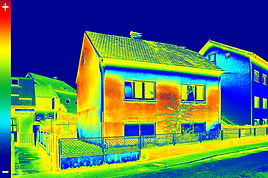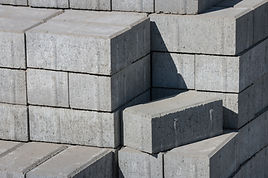
BUILDING ENVELOPE INSPECTIONS




The building envelope is defined as the physical separator between the conditioned and unconditioned environment of a building including the resistance to air, water, heat, light and noise transfer. Through proper material choice, installation, and maintenance, all of the elements of the outer shell will maintain a dry, heated, or cooled indoor environment that will facilitate its climate control.
The most important purpose within the building envelope system is the control of rain and moisture.
Using infrared imaging equipment, we are able to identify trapped moisture and leakage areas, structural defects in stucco and concrete building materials, and energy losses.
Our building envelope inspections can be done from the ground or by air. In situations where a building is too tall to efficiently inspect and diagnose from the ground, a thermal drone equipped with an infrared imaging system will be deployed if possible. The thermal drone will provide detailed information for on-site analysis. If it is not possible to deploy a thermal drone, we have several other methods developed through trial and experience to efficiently inspect the envelope.
We inspect all building envelope situations for example:
-
Moisture Penetration in Walls - Wall system types in regards to water penetration are barrier, drainage, and surface-sealed walls.
-
Barrier walls (such as concrete and most masonry) are designed to allow water to be absorbed but not penetrate the wall.
-
Drainage walls are designed with a system to allow the water that penetrates the exterior surface to exit the structure without entering the building or effecting its components.
-
Surface-sealed walls are designed to allow zero penetration of water through the exterior surface.
-
-
Defects in Walls - Walls can develop defects over time or from faulty installation. As they are subject to the elements, they will require proper maintenance to withstand their given lifetime. We use a variety of methods to inspect walls utilizing infrared imaging technology as well as many other methods. Certain situations and certain wall materials may require invasive testing to properly diagnose issues. We inspect all types of wall materials such as:
-
CMU (Concrete Masonry Unit) Block Wall
-
ICF (Insulated Concrete Form) Walls
-
Brick Walls
-
Concrete Brick Walls
-
Concrete Wallboards
-
Gypsum Board Systems
-
Fiber Reinforced Cememnt Boards
-
Wood Walls
-
Vinyl Siding
-
-
Windows - Window systems become complicated in regards to water intrusion as they pass through the entire envelope of the building and require proper installation, sealant, and maintenance to properly operate and shed water. Through methodical spray testing, infrared imaging, and an understanding of the window system, areas with defects in regards to water and air are able to be located and diagnosed for quick repair.
-
Energy Efficiency - The components of the building envelope rely on each other, their proper installation, and maintenance to maintain their efficiency in terms of energy. All components of a building inspection will reveal the energy efficiency of the building and its problematic areas.
-
Insulation Issues - Missing insulation and wet insulation are major issues within the building envelope in terms of energy. Insulation is the main line of defense in terms of properly heating and cooling of a building. When insulation becomes saturated its R Value (ability to resist heat transfer) is reduced. The heat being able to flow in or out more easily makes the HVAC systems work harder to maintain the buildings desired temperature in turn costing more money in electricity and reducing the lifespan of the HVAC components.
-
Air Leakage and Building Pressure - The intrusion of exterior air through defects within the building envelope can create a variety of issues within the building. Air entering a condition building will create moisture and mold issues as it will find a way to condense somewhere inside. The intrusion of exterior air will also put strain on the HVAC systems.




